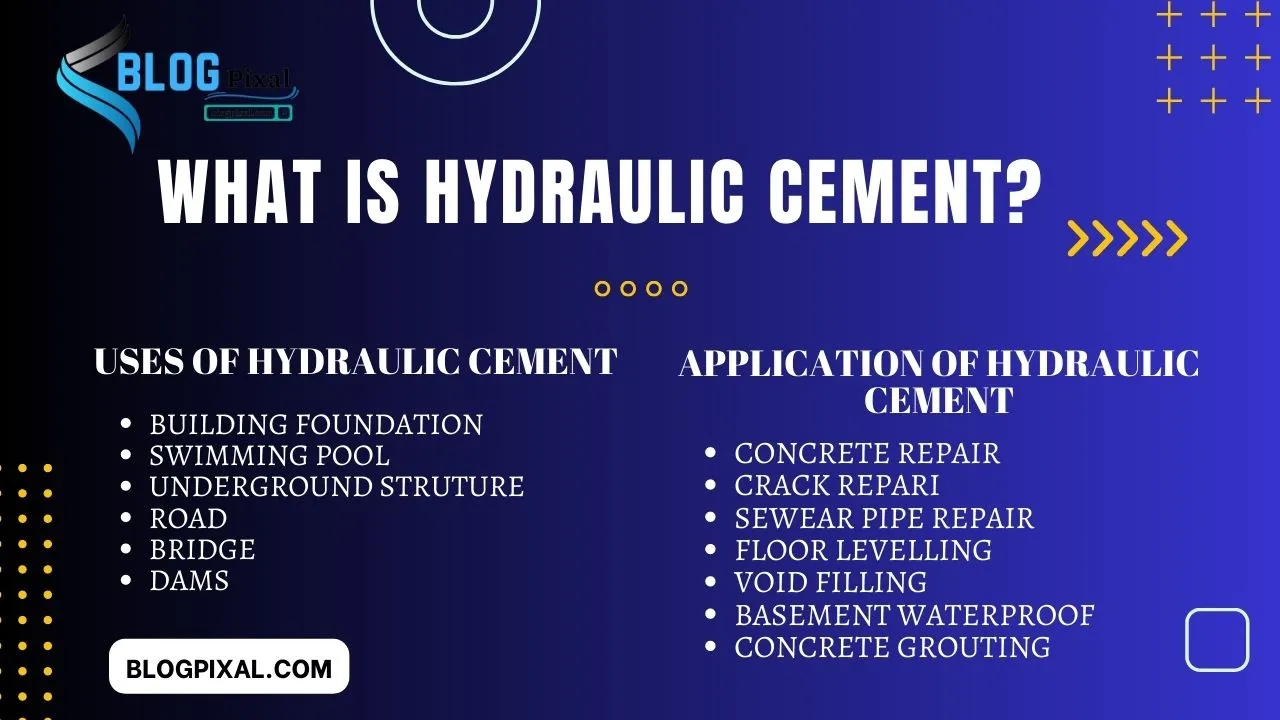Hello guys lets welcome to the next blog. Today is the latest blog post of the topic in Water Rise form basement floor. If you know already about it that’s very good. But i hope this is also very informative to you. Some additional information will be included in this article. Water is the most dangerous to the building.
Most of the structural component is directly affected due to the water. Today i will give you one of the major building issue in the basement floor. In the basement floor is affected due to the water by rising water flow. Let’s discuss in details:
Introduction
This is very frustrated and costly problem in the building. This is one of the dangerous water seepage in the buildings. This is not only damages your belongings but also poses serious risks to the structural integrity of your home. Directly damage to the structural component(slab, beam and pillar) due to the water gradually.
So we need to treatment as soon as possible. So today in this article we will discuss in details of effective solutions fix water coming up through the basement floor. By understanding the causes, implementing preventive measures, and employing appropriate remedies, you can reclaim a dry and safe basement space.
Causes of water rise from Basement floor
So first of all we need to know about the possible causes of Water coming form the basement floor. There are many possible causes of this critical and frustrated problem to the house owners. It can lead to water damage, structural problems, and even mold growth if left unaddressed. Several factors can contribute to this problem. Here are Some possible causes of water coming up through the basement floor:
High Ground water Table
If the Ground water table in your area is high, especially during rainy seasons, it can exert pressure on the basement floor and seep through cracks or gaps in the foundation. So this is one of the major causes of rise water seepage from the building basement floor. These effected by the nature of ground, selection of construction and other combination of building.
A high groundwater table is a Major cause for homeowners as it can lead to water rising from the basement floor. This phenomenon occurs when the water level beneath the ground reaches an elevated position, causing it to exert pressure against basement walls and floors. The resulting water seepage can lead to a host of problems, including structural damage, mold growth, and an overall compromised living environment.
Water coming from the basement floor after rain due to the high ground water table by the action of capillary. So heavy rain is also major case of rise ground water table.
Understanding the causes of a high groundwater table and its impact on basement flooding is essential for homeowners seeking effective solutions to Reduce this issue.
Poor Foundation Drainage
Inadequate or malfunctioning drainage systems around the foundation can result in water accumulation around the basement. This water may find its way through cracks or gaps in the floor. So we need to provide proper connection of Sanitary and plumbing pipes and foundation drainage. This is also major possible causes of Water Rise From Basement Floor. In 2023 how to fix it issue for permanently in the building will discuss in details below.
Faulty or clogged footing drains
Footing drains are designed to carry water away from the foundation. When these drains become clogged with debris or damaged, they can no longer effectively divert water, causing it to rise through the basement floor. So we should be work with carefully in the building foundation.
Hydrostatic pressure
Hydrostatic pressure, a phenomenon that can lead to the rise of water from the basement floor, is a significant concern for many homeowners. This natural force, resulting from the weight of water exerted on submerged surfaces, has the potential to cause structural damage and water intrusion.
Understanding the causes and implications of hydrostatic pressure is important for implementing effective preventive measures and ensuring the safety and integrity of basements.
Hydrostatic pressure occurs when water accumulates around the foundation and exerts pressure against the basement walls and floor. This pressure can force water through cracks or porous concrete.
Improperly sealed foundation
If the foundation walls and floor were not adequately sealed during construction or if the sealant has deteriorated over time, water can infiltrate the basement through these vulnerable points.
Cracks in the basement floor
Over time, concrete can develop cracks due to settling, soil movement, or other factors. These cracks provide an easy pathway for water to enter the basement. Different type of cracks are occur by different factor. Like Building settled, Earthquake and human construction errors. If the flooring cracks are visible and water coming up from basement floor cracks.
Plumbing leaks
This is also possible causes of water rise form the basement floor. Leaky pipes or faulty plumbing fixtures located beneath the basement floor can cause water to seep upward. This can happen if the water supply or drain lines are damaged or improperly connected. Under ground Plumping leakage is also major causes of Water Rise From Basement Floor. So we need to proper connection and slope maintain of plumbing system.
Sump pump failure
A sump pump is installed to prevent water accumulation in the basement. If the sump pump malfunctions or fails to operate during heavy rainfall or flooding, water can back up and enter the basement.
f you are experiencing water coming from your basement floor, one possible cause could be a sump pump failure. A sump pump is a device typically installed in the lowest part of a basement. It helps prevent flooding by collecting and redirection water away from the foundation.
When a sump pump fails, it can lead to water accumulation in the basement, If the flooring has cracked and scrubbed then resulting in water upcoming on the basement floor.
The water upcoming from the basement due to some reason with the sump pump:
If there is a power failure or the sump pump is not connected to a backup power source, it will be unable to operate during periods of heavy rainfall or flooding.
The sump pump may experience mechanical issues, such as a broken float switch, a clogged intake screen, a faulty motor, or a jammed impeller, preventing it from effectively pumping water out of the sump pit.
If the sump pump was not installed correctly, it may not be able to handle the volume of water or may have been positioned in a way that hinders its functionality.
Regular maintenance is essential for ensuring the proper functioning of a sump pump. Neglecting routine maintenance tasks like cleaning the pump, testing its operation, or replacing worn-out parts can lead to failure when it is needed most.
Poor surface drainage
If the grading around your home slopes toward the foundation instead of away from it, rainwater can pool around the basement walls. Eventually, this water may penetrate the floor, leading to water infiltration.
Sewer backups
In rare cases, sewer backups or blockages can cause water to backflow into the basement through floor drains or plumbing fixtures. This can occur if the main sewer line becomes clogged or overwhelmed during heavy rainfall.
It’s important to identify the specific cause of water intrusion to determine the most appropriate solution. Consulting with a professional waterproofing contractor or a qualified building inspector can help diagnose the issue and provide recommendations for effective repairs or preventative measures.
Also Read: Self Leveling Concrete
Implementing Preventive Measures
Implementing preventive measures is most important to maintaining safety and reducing the risk of various defected in the structural component. We implement preventive measures of possible causes of water moving upward from the basement floor. In 2023 we can implement following preventive measures to enhance safety and prevent structural Accidents.
Regular Risk Assessments
Conducting thorough risk assessments allows for the identification of potential Risks and Weakness. By evaluating the risks associated with specific activities, areas, or processes, appropriate preventive measures can be implemented. So This is a initial preventive measure to reduce of water flow up ward from the basement areas.
Training and Education
Providing Basic training and education programs to ensures that individuals are equipped with the necessary knowledge and skills to identify the issues and prevent potential risks. This includes training and skill on emergency condition management procedures, safety protocols, and best practices. proper training and education helps to prevent Water Rise From Basement Floor.
Safety Equipment and Gear
Supplying appropriate safety equipment and gear is essential in preventing injuries. This includes items such as helmets, gloves, safety goggles, and protective clothing, tailored to the specific needs of the environment or activity.
Regular Equipment Maintenance
Implementing regular maintenance schedules for equipment and machinery helps identify and address potential defects. Timely of the basement floor maintenance reduces the risk of accidents caused by faulty equipment.
Safety Inspections and Audits
Conducting regular inspections and audits of facilities, work areas, and processes ensures compliance with safety regulations and identifies potential Risk. Corrective actions can be taken promptly to prevent accidents. So regular inspection should be performed by the technical personnel.
Emergency Response Planning
Developing extensive emergency response plans prepares individuals to respond effectively in case of emergencies. This includes establishing evacuation procedures, emergency contact information, and communication protocols.
Implementing Safety Policies and Procedures
Establishing clear safety policies and procedures provides guidelines for safe conduct and helps create a culture of safety within an organization. This ensures that safety measures are consistently followed.
Employee Engagement and Reporting Systems
Encouraging employee engagement in safety practices promotes a proactive safety culture. Implementing reporting systems for near-misses and hazards encourages individuals to report potential risks, facilitating timely preventive actions.
Implementing Environmental Controls
Analysing and implementing environmental controls, such as ventilation systems, noise reduction measures, and ergonomic design, can help prevent long-term health issues and create a safer working environment.
Regular Safety Drills and Exercises
Conducting regular safety drills and exercises allows individuals to practice emergency procedures and enhances their readiness to respond effectively in critical situations. This includes fire drills, evacuation exercises, and simulated emergency scenarios.
By implementing these preventive measures, organizations and individuals can significantly reduce the Such issues of accidents, injuries, and potential harm. Proactive safety measures create a secure environment, foster a culture of safety, and protect the well-being of all involved. So guys this all the preventive measure should have in initial phase to reduction Water Rise form basement floor issue.
Repairing Cracks and Sealing Gaps
Fineout cracks and gaps is vital to prevent water from infiltrating your basement. Here’s how you can tackle these issues:
Identify and fill cracks in the foundation walls or floor using appropriate sealants, epoxy injections, or polyurethane foam. This will help prevent further water penetration.
Check basement windows and doors for gaps and apply weatherstripping or caulking to seal them. This will enhance the basement’s overall water resistance.
The under RCC construction should be proper and check the initial compressive strength of the concrete. Ratio maintain, proper vibration, quality materials use and mixing quality should have better. To maintain this quality supervision is necessary.
Expert Solutions for Water Seepage
In more severe cases, it may be necessary to seek professional assistance. Consider the following expert solutions:
In situation where the water seepage is persistent and server, exterior excavation may be required. The involves exposing the foundation walls and applying a waterproofing coating to provide lasting protection.
Professional contractors can use specialized injection systems to seal cracks and gaps in the foundation walls, creating a watertight barrier against future water infiltration.
Disadvantages of water rise from basement floor
- Structural damage to the basement walls and floor.
- Increased risk of mold and mildew growth.
- Potential damage to stored belongings and furniture.
- Elevated humidity levels, leading to a damp and uncomfortable environment.
- Weakening of the foundation, potentially compromising the structural integrity of the entire building.
- Health hazards due to the presence of stagnant water and mold.
- Increased risk of electrical hazards if water comes into contact with wiring or appliances.
- Difficulty in cleaning and drying the basement area.
- Unpleasant odors caused by water damage.
- Higher risk of basement flooding during heavy rainfall or storms.
- Reduced property value due to water damage.
- Increased insurance premiums or difficulty in obtaining coverage.
- Potential damage to basement insulation, leading to decreased energy efficiency.
- Risk of water seeping into adjacent rooms or floors.
- Potential damage to important systems located in the basement, such as HVAC or plumbing.
- Additional maintenance and repair costs.
- Time-consuming and labor-intensive cleanup process.
- Loss of usable space in the basement due to water damage.
- Potential damage to wall finishes, such as paint or wallpaper.
- Risk of foundation settlement or shifting due to water saturation.
How to stop water coming up from the Basement floor fast way?
There are no fast solution to prevent water seepage through Basement floor But i am added some valuable solution. Following are some basic solutions you can measure if this issues occures:
Providing of drain tile system in the foundation. Drain Tile is a basic solution to stop the Water Rise From Basement Floor. Which have two types such as interior and exterior drain tile system. The drain tile is provided around the underneath perimeter of foundation with internally and externally. This is a common and easy techniques to initially measures.
The floor water is to be collected in the drain tile and supply to the main sewar line to providing perforated piping system. If you have any question of seepage related please directly ask me on fakebook. Thank you.
Conclusion
Water coming up through the basement floor can be a major headache for home owners. By understanding the causes, implementing preventive measures, and addressing cracks and gaps, you can effectively combat this issue. Remember to maintain proper exterior drainage, seal any openings, and consider professional solutions when needed. With these strategies in place, you can safeguard your basement against water seepage, ensuring a dry and secure living space for years to come.
FAQs
What are the common causes of water rising from the basement floor?
Several factors can lead to water rising from the basement floor. Common causes include heavy rainfall, poor drainage systems, high water table, cracks in the foundation, malfunctioning sump pumps, or plumbing leaks.
How can I prevent water from rising in my basement?
Ensure proper grading around the foundation to direct water away from the house.
Maintain functioning gutters and downspouts, keeping them free from debris.
Install a sump pump and regularly check its operation.
Seal any cracks or gaps in the foundation walls.
Consider waterproofing your basement walls and floors.
What should I do if water starts rising from the basement floor?
If you notice water rising in your basement, it is crucial to take immediate action to minimize damage. Follow these steps:
Ensure your safety by turning off electricity to the affected area.
Identify the source of water, if possible, and stop it if it’s a plumbing issue.
Contact a professional water remediation service to assess the situation and mitigate the damage.
Remove any valuable items from the affected area to prevent further harm.
Document the damage by taking photos or videos for insurance purposes.
Can I clean up water rising from the basement myself?
It is recommended to seek professional help for cleaning up water rising from the basement. Water damage can be complex and may lead to mold growth if not properly addressed. Professional water remediation services have the expertise and equipment to handle the situation safely and effectively.
Does homeowners insurance cover water damage from basement floor water rise?
Homeowners’ insurance policies vary, so it is important to review your specific policy to understand the coverage for water damage. In many cases, sudden and accidental water damage caused by a covered peril, such as a burst pipe, may be covered. However, damage resulting from gradual water seepage or poor maintenance may not be covered. Contact your insurance provider to discuss your coverage options and any necessary steps for filing a claim.










